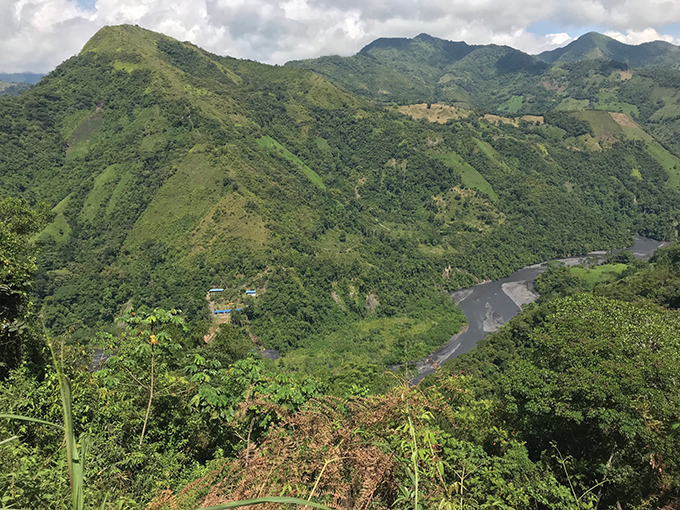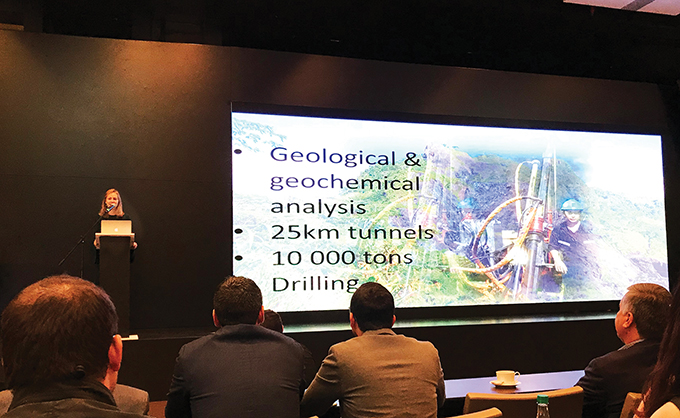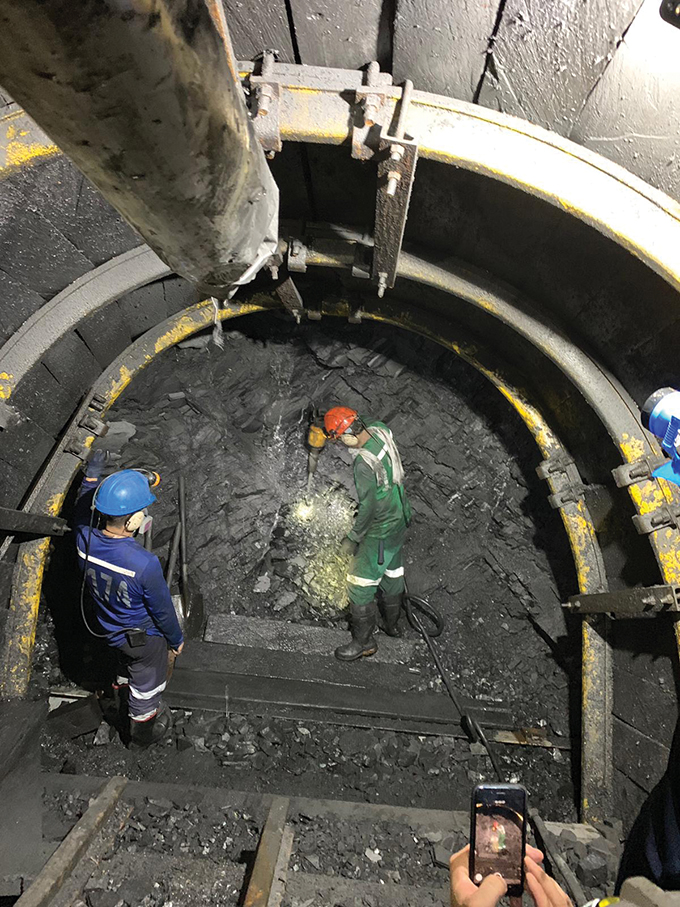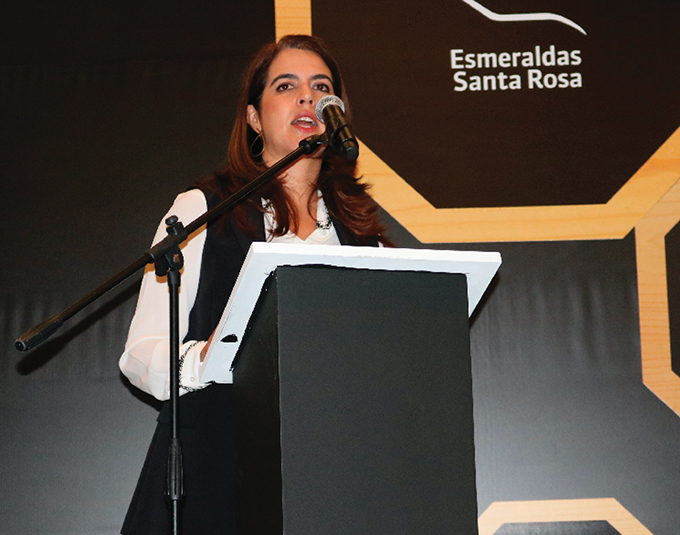The Second World Emerald Symposium (2WES) took place in Bogotà, Colombia last October – three years after the successful First World Emerald Symposium – with an overwhelmingly positive response from participants.
By Cynthia Unninayar
Ethical sourcing, transparency and corporate social responsibility in the emerald industry were the dominant and recurrent themes of the Second World Emerald Symposium (2WES) in Bogotà, Colombia last October. The symposium also tackled issues concerning industrial and artisanal mining, geology, gemmology, origin, treatments, new technologies, and jewellery, among others.
Featuring 75 presentations, the three-day 2WES attracted more than 200 people from overseas and some 300 from Colombia. Organised by Fedesmeraldas, Colombia’s National Emerald Federation, the symposium brought together the world’s key players in the emerald industry, including representatives of the Colombian government and emerald trade associations (Aprecol, Acodes, Asocoesmeraldas), dealers, gemmologists, laboratories, miners, jewellers and more.
Oscar Baquero, president of Fedesmeraldas, explained that the federation addresses the needs of the emerald industry and works with the government to ensure best practices and promote Colombian emeralds abroad. It also conducts research at the mines to expand the knowledge of the nation’s green gem, all while promoting projects for sustainable and responsible sourcing.
Going green
Exemplifying the importance that the Colombian government places on ethics and best practices in the emerald industry, a number of high-level officials spoke at the symposium. In her keynote address that kicked off the programme, Vice Minister Caroline Rojas Hayes from the Ministry of Mines and Energy discussed the general situation in the Colombian emerald mining industry, including how the government is working to provide education and training to small-scale and artisanal miners in the areas of responsible sourcing and sustainability. She also outlined governmental efforts to help unlicensed miners acquire legal status and bring them in line with regulations and taxation.
Among the keynote speakers was Edwin Molina, president of the Colombian Emerald Producers Association (Aprecol), which comprises emerald producers and promotes established best practices and sustainable development initiatives, along with social responsibility. Founded in 2002, Aprecol works with the government to set policy and support sustainable emerald production. “We believe emeralds should really be green – from every point of view,” said Molina. Aprecol’s green efforts extend to improving infrastructure, helping local farmers, driving tourism and even cultural programmes such as promoting community art classes for adults and children.
Keynote speaker Guillermo Galvis, president of Acodes (Colombian Exporters Association) and chairman of the symposium noted that responsibly sourced gems build confidence for consumers who are concerned about their purchases. He also reiterated the importance of having the private sector work with the government and local communities to achieve lasting social solutions for sustainability in the mining areas. “It’s up to us to have a better industry,” he mused.
The global importance of the 2WES was also illustrated by the presence of a representative from the Organization for Economic Co-operation and Development (OECD), Policy Analyst Luca Maiotti, who detailed the OECD’s guidelines for traceability and responsible supply chains.
Traceability
Edward Mendelson, Sustainable Supply Chain project manager at Everledger, elaborated on how blockchain technology can be used to trace gems from mine to market. “As assets move along the supply chain, the use of blockchain allows them to be tracked permanently and for the transactional data to be accessible to all relevant parties. A visible and auditable trail is created, ensuring full transparency to create an ecosystem of trust among stakeholders,” he said.
Continuing the traceability theme, Daniel Nyfeler, managing director of Gübelin Gem Lab, explained the lab’s Emerald Paternity Test (EPT) project, which was recently initiated with a few industrial miners. EPT is a physical tracer applied on the rough gemstone directly at the mine, containing information specific to the mine. With EPT, the exact source of the emerald can even be determined at later stages in the supply chain. It makes use of the latest generation of nano-labels, custom-built for a specific mining operation. Nyfeler indicated this technique might not, however, be suitable for small-scale miners unless a structure could be put into place to organise them into a larger group.
A different approach to traceability was provided by Gloria Prieto from Colombia’s Ministry of Mines and Energy. She unveiled the government’s plan for a five-year “Mineral Digital Fingerprint” project, which started in 2018. The goal is to provide an understanding of the particular conditions and physical-chemical characteristics that were present at the time of the geological formation of a mineral, which then gives a specific geo-chemical DNA. This "Fingerprint” can also be traced at the different stages of exploitation, refinement and commercialisation of the minerals.
The mines
Speakers representing three of the largest mines also related their activities. Rosey Perkins, manager of New Projects and Corporate Communication at Canada-listed Fura Gems – owner of the iconic and recently acquired Coscuez Mine – stated, “There is a reticence about Colombia and its past, but this must be the past. We work with communities now that are established and reliable.” Among the community-oriented activities Fura supports are a health clinic, bakery, and sewing centre, and it recently formed a women-only washing plant for mine waste.
Charles Burgess, president of Mineria Texas Colombia (MTC), detailed the transformation of the Colombian emerald industry over the last decade, including MTC’s purchase in 2009 of one of the region’s most important and iconic mines, Puerto Arturo in Muzo. MTC introduced modern mining methods and today has a number of social and health programmes for the local community. One of MTC’s non-mine community projects is Furatena Cacao, which promotes sustainable cocoa cultivation by farming communities. “There can be no growth in this industry without bringing in local communities,” he commented, adding that MTC has also established a cutting facility in Bogotà for its emeralds that brings added value and employment to the local population.
German Forero, director of Esmeraldas Santa Rosa, owner of the large Cunas Mine, spoke about the company’s socially and environmentally responsible mining projects in the Boyacá region. He said, “Our country, despite violence in the past, has a great deal to offer due to the national development plans that include mining, housing and education. The mining industry is an example of development in Colombia that includes good social practices, the promotion of employment and working with the environmental authorities to improve standards in the region.”
Emeralds and China
The symposium attracted several delegates from China, who discussed the potential for coloured gemstones, including emeralds, in their country. “China's jewellery market is large, but compared to Europe and the US, its jewellery share per capita is still at a low level, so there is huge room for growth,” said Zhao Xinhua, deputy director of the International Cooperation Department of the Gems & Jewelry Trade Association of China (GAC). “China's emerald market has developed steadily and has gradually attracted the attention of some consumers in recent years.” She cautioned, however, that Chinese consumers prefer pure gems – natural and non-treated – and noted that oiled emeralds are unacceptable to some people.
Yi Liu, vice general manager of GAC Capital Ltd (GACC), gave an overview of the transformation and capitalisation of the Chinese jewellery industry and potential investments in the sector. He stated that sales in the market have grown nearly 31 percent over the last five years, with average consumption valued at US$54 million. Yi also noted accelerating overseas mergers and acquisitions, citing several Chinese companies that have recently purchased shares in European gem and jewellery companies.
Taijin Lu, chief researcher at the National Gemstore Testing Center, gave a brief overview of the lab's activities along with its research on emeralds, and the establishment of a national standard for grading the gems. He also commented that educating Chinese consumers to appreciate emeralds is important.
Andrew Lucas, vice president of Shenzhen-based Guild Institute of Gemmology, outlined an ambitious programme to teach Chinese consumers about coloured gemstones. “Jewellery consumption in China is over 100 million pieces, but coloured gemstone jewellery is estimated to comprise less than 10 percent of that,” he said. “To create consumer confidence in a product as vast and complicated as coloured gemstones, education can provide transparency and ensure trust.”
The Second World Emerald Symposium was not only informative, but it was also reflective of an industry that is heading in the right direction. Added to this, the notion of corporate social responsibility is being taken very seriously, which helps local communities in mining areas and emerald-producing countries as a whole.














